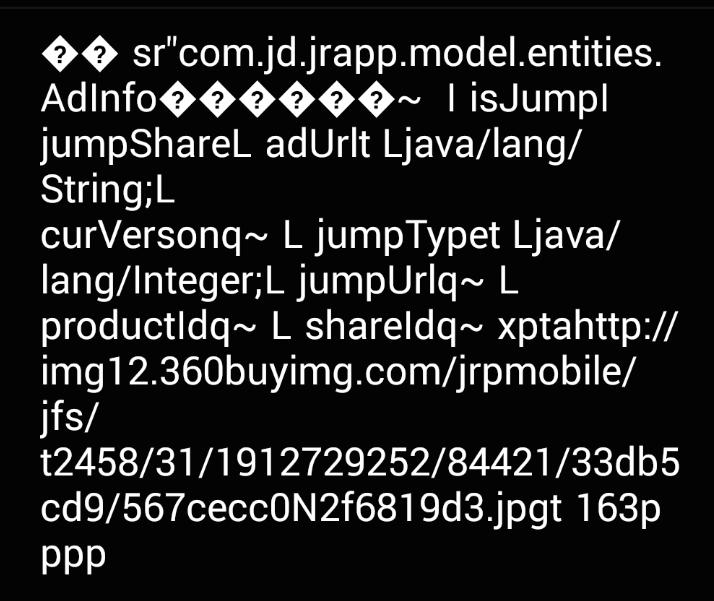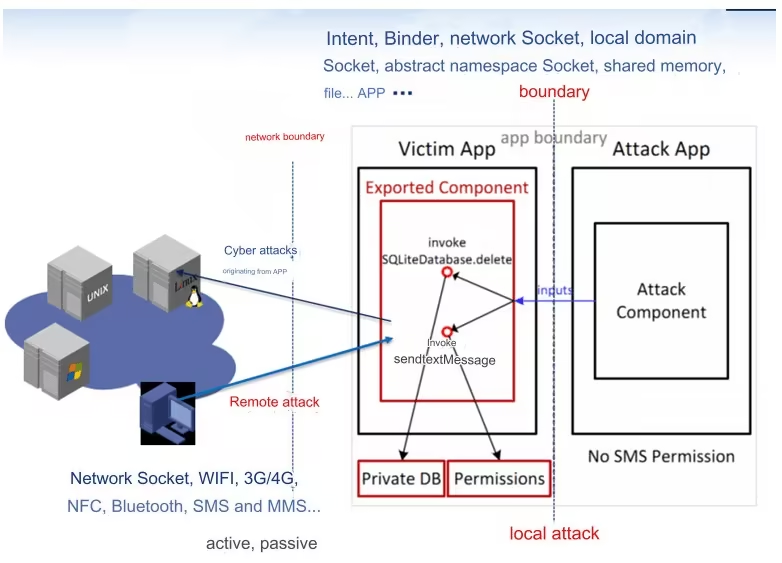 Front page > Programming > How to Do Android App Security Testing: A Guide for Developers and Testers
Front page > Programming > How to Do Android App Security Testing: A Guide for Developers and Testers
How to Do Android App Security Testing: A Guide for Developers and Testers
Introduction
As a die-hard fan of Android phones, if your phone suddenly drops, would your first thought be "Oh my god!" or that your money in Google Pay or Paypal is not safe? If the latest downloaded app not only pops up various boring ads but also unexpected notifications, would you think it might be a phishing attempt and immediately uninstall the app?
How can we ensure that our app provides a safe experience for users who have insufficient awareness of Android security vulnerabilities? What are the security vulnerabilities in the Android ecosystem? Where can we explore new Android security testing techniques? How can we streamline the security testing process?
Common Android Security Vulnerabilities
Firstly, the open-source development advantage of the Android operating system also conceals inherent security issues in its development, such as the Android system's sandbox system (i.e., virtual machine). However, the underlying layer has one vulnerability after another, allowing malicious programs (or tools) to gain root access and break the sandbox's restrictions. Just like in the PC era, there is no absolutely secure PC operating system; in the mobile internet era, there is no absolutely secure mobile operating system either. The security risks of the Android open-source ecosystem are like blood-stained alarm bells, striking the hearts of every Android developer.
Secondly, the security risks in the Android APP/SDK development process are like unknown black holes. We never know where the endpoint of security confrontation is, who the attackers are, who the terminators are, and how to defend against them.
Finally, at the user level, what are some common and recognizable security behavior vulnerabilities?
Both Android Apps and SDKs have security vulnerabilities to some extent. Perhaps one day, your application might be affected by one of the above security vulnerabilities. Coincidentally, while testing an Android SDK recently, we discovered a security vulnerability related to Android application components. Based on this example, the methods, techniques, and processes for Android SDK security testing are summarised.
Android APPs' Security Testing Examples
Overview of Vulnerability Causes
An optional component of an application (hereinafter referred to as the application) Android SDK has opened a random port locally to monitor whether the Java layer service is alive. However, when the Java layer communicates with the component, it does not strictly check the input parameters, resulting in the possibility of being filled with attack code and malicious attacks when calling the "system()" function of the Linux system.
The following screenshot shows that after the simulation port is attacked, the application component intent modifies the URL content during communication, and the Webview displays garbled code:

Potential Security Risks of the Vulnerability
The four major application components of Android APPs: Activity, Receiver, Service, and Content Provider, as well as the security roles of application components communicating through intent for IPC, will not be discussed in detail here. Leveraging the component-related vulnerability in the above example, the following diagram shows the attack dimensions related to the terminal APP side:

Due to the local application environment of Android APP, the network socket is inherently lack of fine-grained authentication and authorization mechanism. Therefore, if the Android client is used as the server, the reverse code is used to search the local random port number of the application, and the attack is actively sent to the port, the following security hazards will lurk:
Local command execution: When the Package name of the embedded application is specified as the application itself and the Component name is specified as the activity of the application, any activity of the application can be started, including the protected non-exported activity, thus causing a security hazard. For example, a denial of service vulnerability can be found by starting several unexported activities one by one through HTTP requests.
Command control to modify application permissions: Pass in the intention to start Android application components through the open socket port, and then execute operations such as starting activity and sending broadcast with the permissions of the attacked application. Because the intents passed in through the socket cannot perform fine-grained checks on the identity and permissions of the sender, bypassing the permission protection provided by Android for application components, and can start the unexported and permission-protected application components, posing a security hazard
Sensitive information disclosure, mobile phone control: A local service opens the UDP port to listen, and after receiving a specific command word, it can return the sensitive information of the mobile phone. For example, Baidu mobile phone butler can remotely manage the cell phone's secretKey, and then unauthorized attackers can fully manage the cell phone through the network.
Android Security Testing Execution
Android Security Hardening Version Optimization
Add checks for system commands and special character filtering in both the Native and Java layers.
Encrypt socket communication for JNI Watchdog daemon process.
Add feature verification for URLs, intents, and activities in local notification functions to prevent redirection to malicious links when clicking on notifications.
Change the storage location of Package name in the app's local storage.
Add online configuration functionality.
These are the important requirements for this security hardening optimization.
Special Security Testing
If you follow conventional system testing or performance testing, you only need to perform forward testing based on the changing requirements. However, for security testing, ensuring the robustness of the SDK's security requires reverse special testing, simulating various security attack methods, and diverging test cases for the modified points.
Android Regular Security Regression Testing
Privacy data: External storage security and internal storage security; check if user names, passwords, chat records, configuration information, and other private information are saved locally and encrypted; verify the integrity of the information before using it.
Permission attacks: Check the app's directory and ensure that its permissions do not allow other group members to read or write; check if system permissions are under attack.
Android component permission protection: Prevent app internal components from being arbitrarily called by third-party programs: prevent Activities from being called by third-party programs, prevent Activity hijacking; ensure Broadcast reception and transmission security, only receive broadcasts sent out by the app, and prevent third parties from receiving transmitted content; prevent maliciously starting or stopping services; check Content Provider operation permissions; if components need to be called externally, verify if signature restrictions have been applied to the caller.
Upgrades: Check the integrity and legality of the upgrade package to avoid hijacking.
3rd-party libraries: If third-party libraries are used, follow up on their updates and check their security.
ROM security: Use official ROMs or ROMs provided by authoritative teams to avoid the addition of implanted ads, Trojans, etc.
Anti-cracking countermeasures: Counteract decompilation, making it impossible to decompile using decompilation tools or obtain the correct disassembly code after decompilation; counteract static analysis by using code obfuscation and encryption; counteract dynamic debugging by adding code to detect debuggers and emulators; prevent recompilation by checking signatures and verifying the hash value of the compiled dex file.
After completing the security special testing and regular process testing, perform rolling regression testing for the app's existing features, compatibility between new and old versions, and compatibility with different Android operating system versions.
Wrap-up
Compared to ordinary performance and system functionality test cases, security test cases require a more comprehensive understanding of the Android ecosystem, such as: covering user security appearance level, application system local and remote attack level, and operating system vulnerability level, with more focus on designing reverse attack thinking test cases.
If the starting point of development is security defense, the starting point of testing is the hacker attack mindset. Designing test cases for attack scenarios and implementing attack testing techniques determines the robustness of the SDK's security.
To ensure the highest level of security for your applications, consider utilizing WeTest Application Security Testing. This service provides a comprehensive evaluation of security issues in applications, timely detection of program vulnerabilities, and offers code repair examples to assist with vulnerability repairs.
Trust WeTest to safeguard your application against potential threats and maintain a secure user experience.

-
 How Can Android Applications Connect to Microsoft SQL Server 2008?Connecting Android Applications to Microsoft SQL Server 2008Android applications can seamlessly connect to central database servers, including Microso...Programming Published on 2024-11-05
How Can Android Applications Connect to Microsoft SQL Server 2008?Connecting Android Applications to Microsoft SQL Server 2008Android applications can seamlessly connect to central database servers, including Microso...Programming Published on 2024-11-05 -
 Here are a few question-based title options, focusing on the core issue: * C++ std::optional: Why No Specialization for Reference Types? (Direct and to the point) * Reference Types in C++ std::optionOptional in C : Why No Specialization for Reference Types?Despite the presence of specialization for reference types in libraries like Boost, the C ...Programming Published on 2024-11-05
Here are a few question-based title options, focusing on the core issue: * C++ std::optional: Why No Specialization for Reference Types? (Direct and to the point) * Reference Types in C++ std::optionOptional in C : Why No Specialization for Reference Types?Despite the presence of specialization for reference types in libraries like Boost, the C ...Programming Published on 2024-11-05 -
 Evaluating A Machine Learning Classification ModelOutline What is the goal of model evaluation? What is the purpose of model evaluation, and what are some common evaluation procedures? What ...Programming Published on 2024-11-05
Evaluating A Machine Learning Classification ModelOutline What is the goal of model evaluation? What is the purpose of model evaluation, and what are some common evaluation procedures? What ...Programming Published on 2024-11-05 -
 How to Eliminate the Eval-Base64_Decode PHP Virus and Protect Your Website?How to Get Rid of Eval-Base64_Decode Like PHP Virus FilesViruses that employ eval-base64_decode techniques, like the one you've described, can be ...Programming Published on 2024-11-05
How to Eliminate the Eval-Base64_Decode PHP Virus and Protect Your Website?How to Get Rid of Eval-Base64_Decode Like PHP Virus FilesViruses that employ eval-base64_decode techniques, like the one you've described, can be ...Programming Published on 2024-11-05 -
 HOw To Rank In Serp In 4Search Engine Ranking Pages (SERP) are where websites compete for visibility and traffic. In 2024, ranking high on Google and other search engines wil...Programming Published on 2024-11-05
HOw To Rank In Serp In 4Search Engine Ranking Pages (SERP) are where websites compete for visibility and traffic. In 2024, ranking high on Google and other search engines wil...Programming Published on 2024-11-05 -
 How to Share a Lock Between Processes in Python Using MultiprocessingSharing a Lock Between Processes in PythonWhen attempting to use pool.map() to target a function with multiple parameters, including a Lock() object, ...Programming Published on 2024-11-05
How to Share a Lock Between Processes in Python Using MultiprocessingSharing a Lock Between Processes in PythonWhen attempting to use pool.map() to target a function with multiple parameters, including a Lock() object, ...Programming Published on 2024-11-05 -
 The difference between readonly and const in Type ScriptThese two features are similar in that they are both non-assignable. Can you explain exactly it? In this article, I will share the differences between...Programming Published on 2024-11-05
The difference between readonly and const in Type ScriptThese two features are similar in that they are both non-assignable. Can you explain exactly it? In this article, I will share the differences between...Programming Published on 2024-11-05 -
 How to Replicate C/C++ Loop Syntax in Python Using Range Function?for Loop in Python: Extending C/C Loop SyntaxIn programming, the for loop is a fundamental construct for iterating over sequences. While C/C emplo...Programming Published on 2024-11-05
How to Replicate C/C++ Loop Syntax in Python Using Range Function?for Loop in Python: Extending C/C Loop SyntaxIn programming, the for loop is a fundamental construct for iterating over sequences. While C/C emplo...Programming Published on 2024-11-05 -
 TechEazy Consulting Launches Comprehensive Java, Spring Boot & AWS Training Program with onth Free InternshipTechEazy Consulting is excited to announce the launch of our comprehensive training program designed for beginners, freshers, and professionals lookin...Programming Published on 2024-11-05
TechEazy Consulting Launches Comprehensive Java, Spring Boot & AWS Training Program with onth Free InternshipTechEazy Consulting is excited to announce the launch of our comprehensive training program designed for beginners, freshers, and professionals lookin...Programming Published on 2024-11-05 -
 Polyfills - a filler or a gaping hole? (Part-1)A few days back, we received a priority message in our organization's Teams chat, which read: Security Vulnerability found - Polyfill JavaScript d...Programming Published on 2024-11-05
Polyfills - a filler or a gaping hole? (Part-1)A few days back, we received a priority message in our organization's Teams chat, which read: Security Vulnerability found - Polyfill JavaScript d...Programming Published on 2024-11-05 -
 Shift operators and bitwise shorthand assignments1. Bit Shift Operators : Shift to the right. >>>: Unsigned right shift (zero-padded). 2. General Syntax of Shift Operators value > num-bits: Moves the...Programming Published on 2024-11-05
Shift operators and bitwise shorthand assignments1. Bit Shift Operators : Shift to the right. >>>: Unsigned right shift (zero-padded). 2. General Syntax of Shift Operators value > num-bits: Moves the...Programming Published on 2024-11-05 -
 How to Establish a Connection to a MySQL Database from Excel using VBA?How can VBA connect to MySQL database in Excel?Connecting to a MySQL Database using VBAAttempting to connect to a MySQL database in Excel using VBA ca...Programming Published on 2024-11-05
How to Establish a Connection to a MySQL Database from Excel using VBA?How can VBA connect to MySQL database in Excel?Connecting to a MySQL Database using VBAAttempting to connect to a MySQL database in Excel using VBA ca...Programming Published on 2024-11-05 -
 Test Automation: Guide to Selenium with Java and TestNGTest Automation has become an integral part of the software development process, allowing teams to increase efficiency, reduce manual errors, and deli...Programming Published on 2024-11-05
Test Automation: Guide to Selenium with Java and TestNGTest Automation has become an integral part of the software development process, allowing teams to increase efficiency, reduce manual errors, and deli...Programming Published on 2024-11-05 -
 My take on a Landing Page for DuckDuckGo“Why don’t you Google it?” is a common answer I get during conversations. The ubiquity of Google has even led to the new verb 'to Google". Bu...Programming Published on 2024-11-05
My take on a Landing Page for DuckDuckGo“Why don’t you Google it?” is a common answer I get during conversations. The ubiquity of Google has even led to the new verb 'to Google". Bu...Programming Published on 2024-11-05 -
 Why Does Turbo C++\'s \"cin\" Only Read the First Word?Turbo C 's "cin" Limitation: Reading Only the First WordIn Turbo C , the "cin" input operator has a limitation when dealing ...Programming Published on 2024-11-05
Why Does Turbo C++\'s \"cin\" Only Read the First Word?Turbo C 's "cin" Limitation: Reading Only the First WordIn Turbo C , the "cin" input operator has a limitation when dealing ...Programming Published on 2024-11-05
Study Chinese
- 1 How do you say "walk" in Chinese? 走路 Chinese pronunciation, 走路 Chinese learning
- 2 How do you say "take a plane" in Chinese? 坐飞机 Chinese pronunciation, 坐飞机 Chinese learning
- 3 How do you say "take a train" in Chinese? 坐火车 Chinese pronunciation, 坐火车 Chinese learning
- 4 How do you say "take a bus" in Chinese? 坐车 Chinese pronunciation, 坐车 Chinese learning
- 5 How to say drive in Chinese? 开车 Chinese pronunciation, 开车 Chinese learning
- 6 How do you say swimming in Chinese? 游泳 Chinese pronunciation, 游泳 Chinese learning
- 7 How do you say ride a bicycle in Chinese? 骑自行车 Chinese pronunciation, 骑自行车 Chinese learning
- 8 How do you say hello in Chinese? 你好Chinese pronunciation, 你好Chinese learning
- 9 How do you say thank you in Chinese? 谢谢Chinese pronunciation, 谢谢Chinese learning
- 10 How to say goodbye in Chinese? 再见Chinese pronunciation, 再见Chinese learning
























